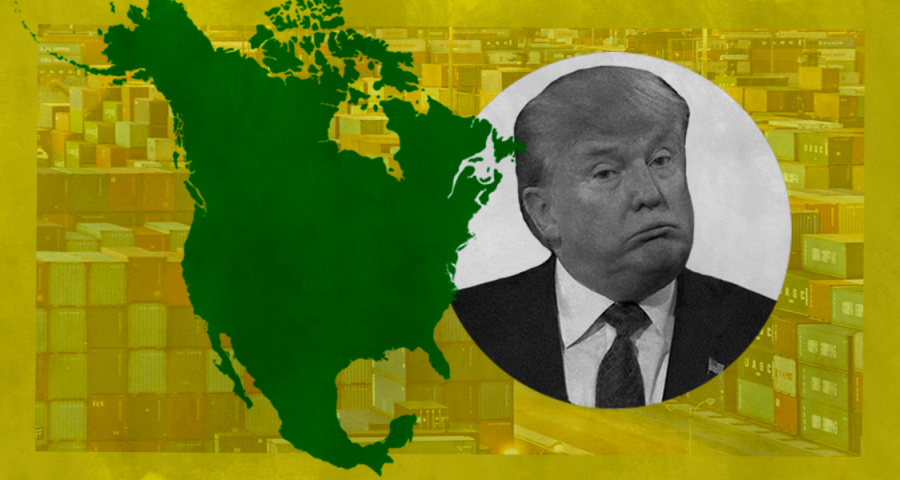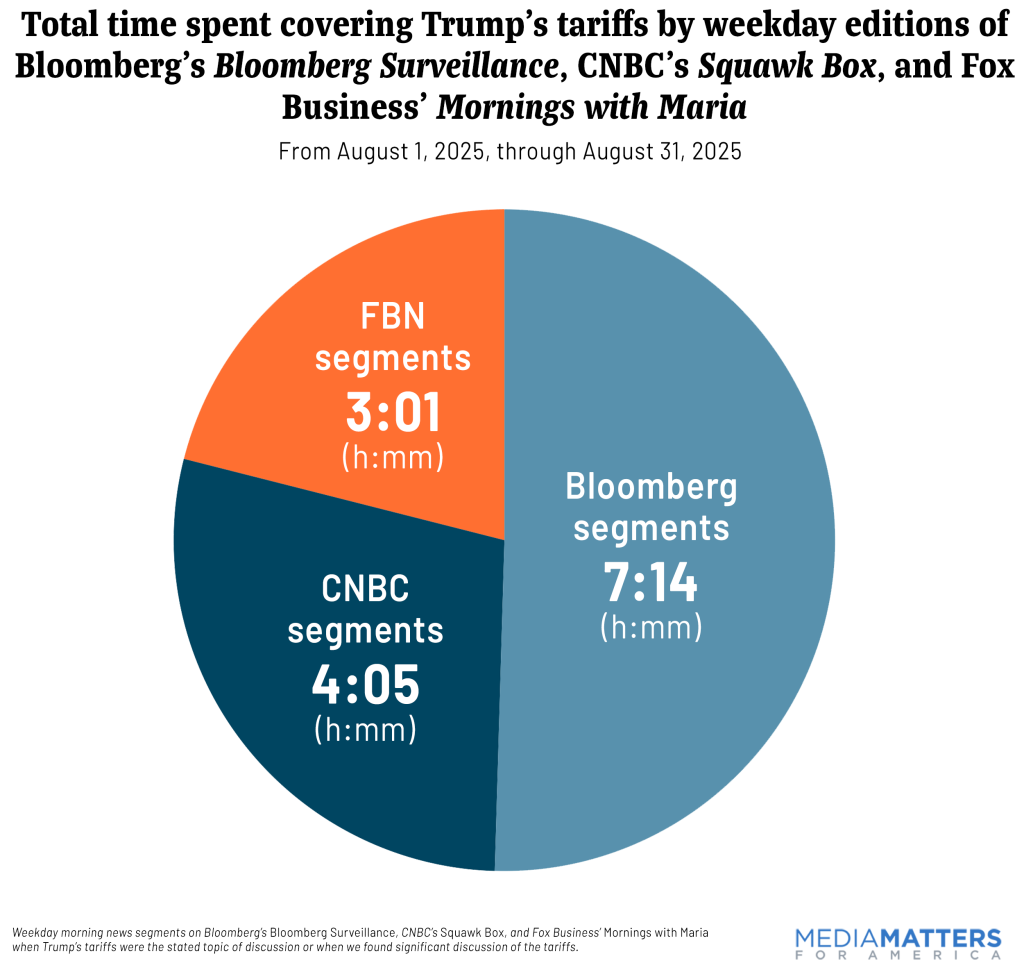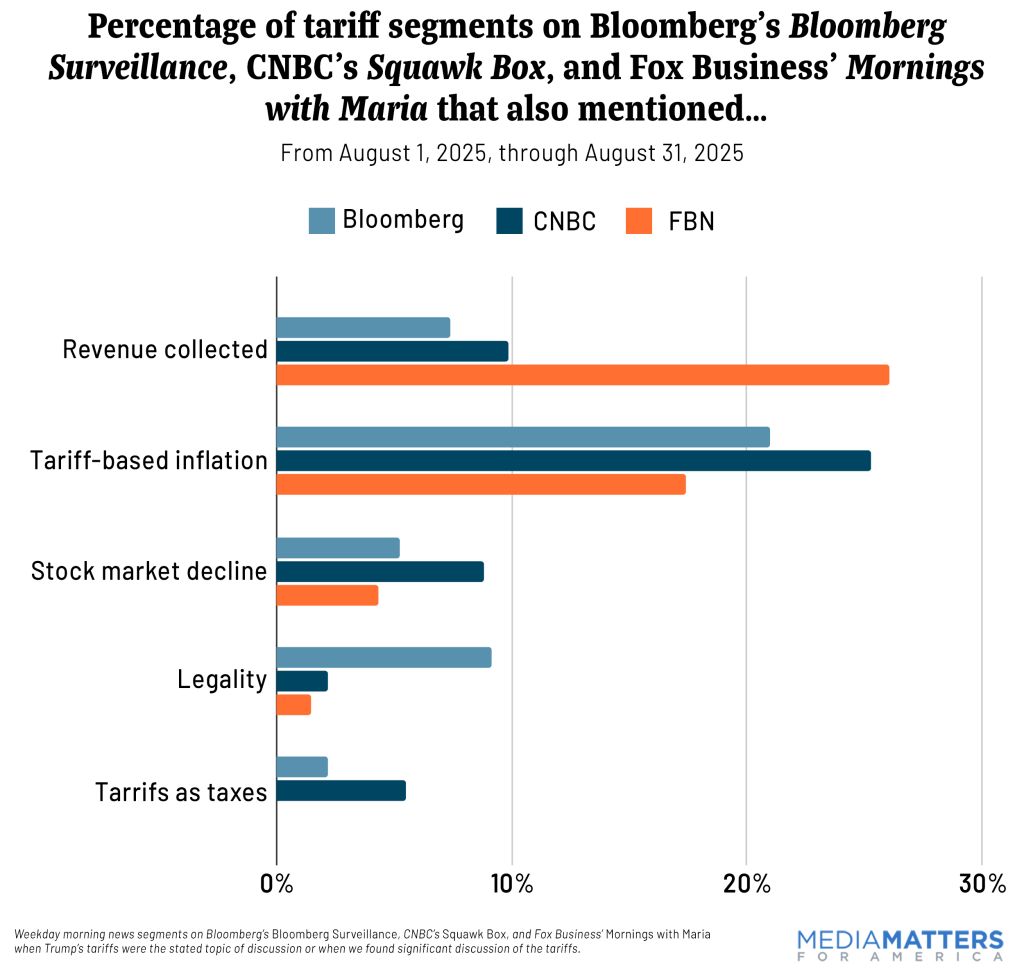Following President Donald Trump’s reimplementation of sweeping global tariff policies this summer, Media Matters reviewed all weekday programming on the flagship premarket news programs aired on Bloomberg, CNBC, and Fox Business to identify trends in their coverage.
Bloomberg’s Bloomberg Surveillance lapped the competition from CNBC’s Squawk Box and Fox Business’ Mornings with Maria Bartiromo over the survey period in terms of the quantity and quality of coverage of the tariffs’ economic ramifications and their questionable legality.
Fox Business' treatment of Trump's tariff policies stood apart from the competition in the other direction, with the network's influential premarket program hosted by Trump ally Maria Bartiromo offering conspicuously little discussion of how Trump's tariffs have effectively raised the taxes paid by American consumers and businesses.
During the survey period, Mornings with Maria's coverage of Trump's tariff policies was notably positive, with the host, guests, and contributors offering comparatively fewer discussions than the other shows of how tariffs were rattling financial markets and potentially reigniting inflation, while also largely overlooking the ongoing legal challenges faced by Trump's unilateral intervention in American tax, trade, and commercial policies.


